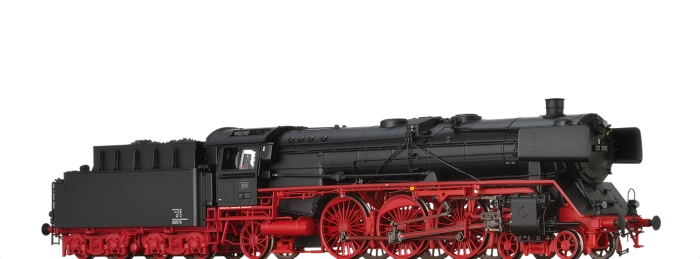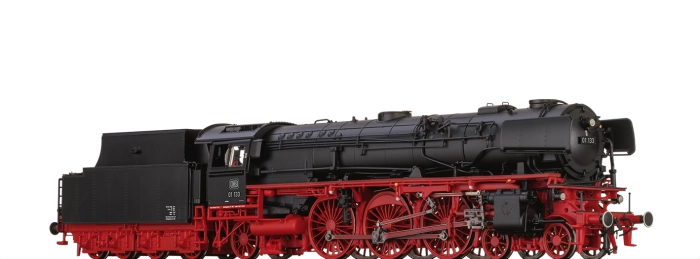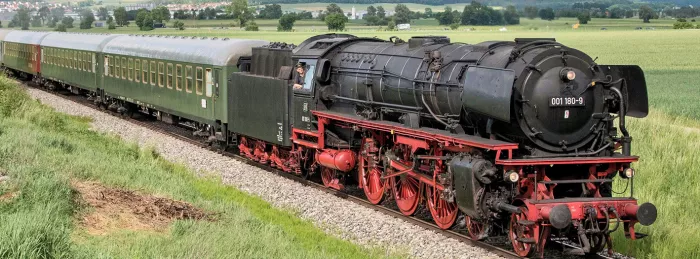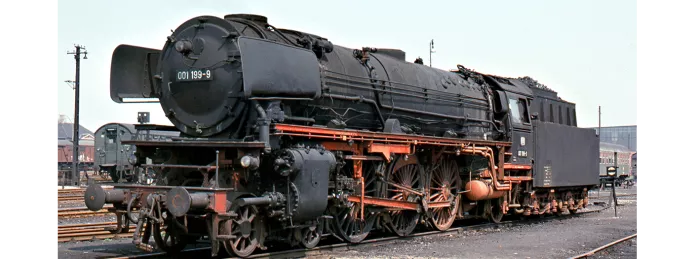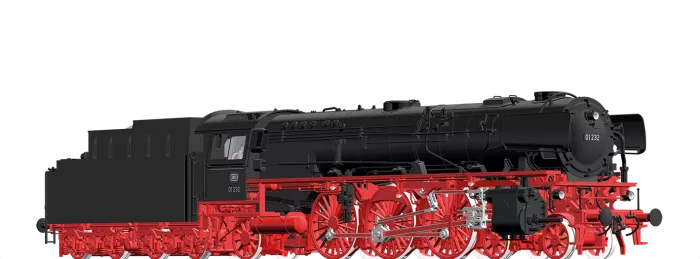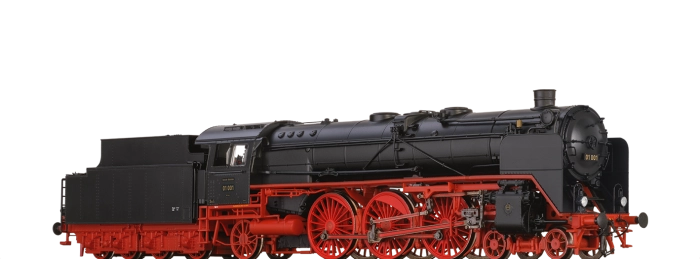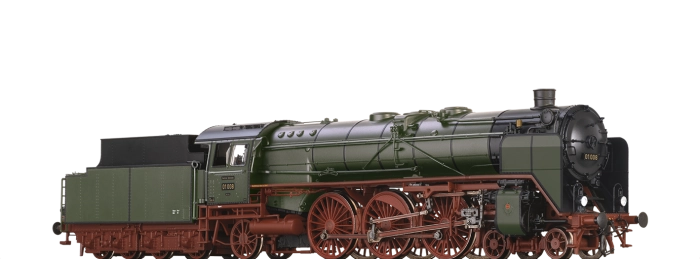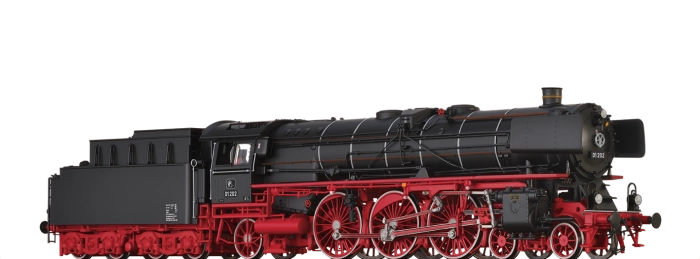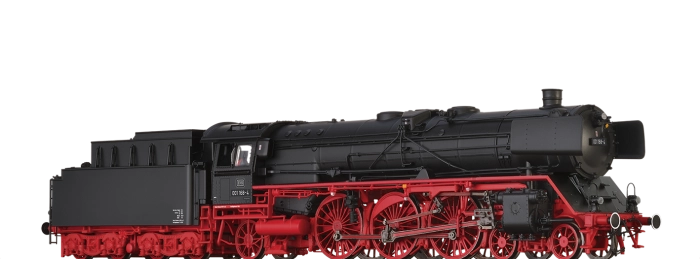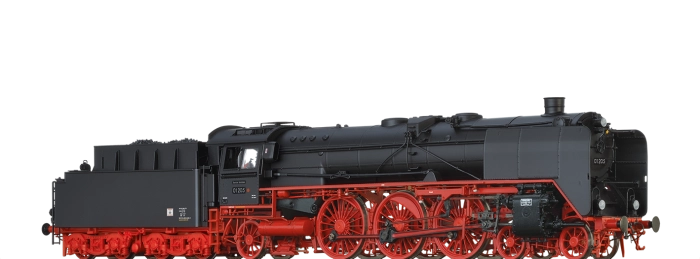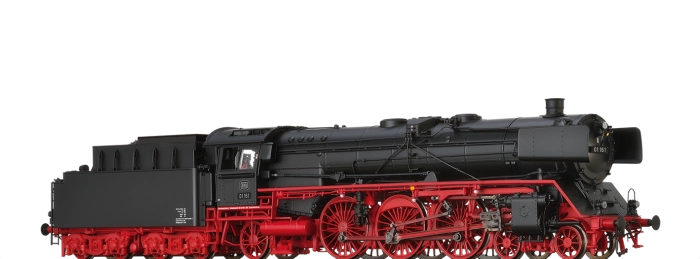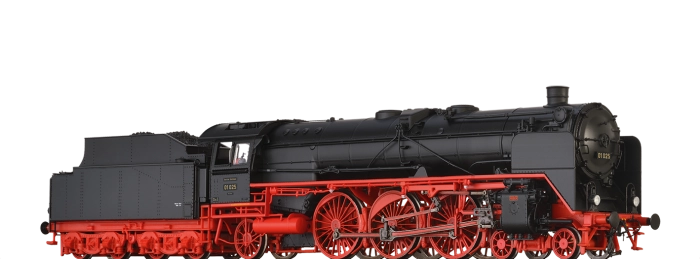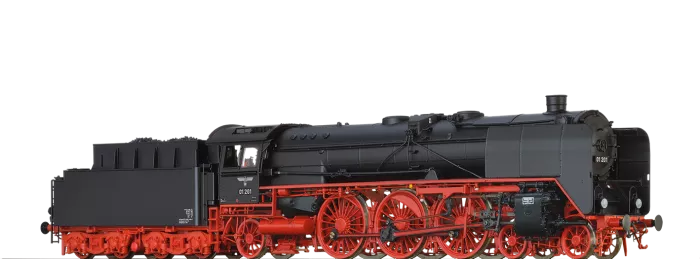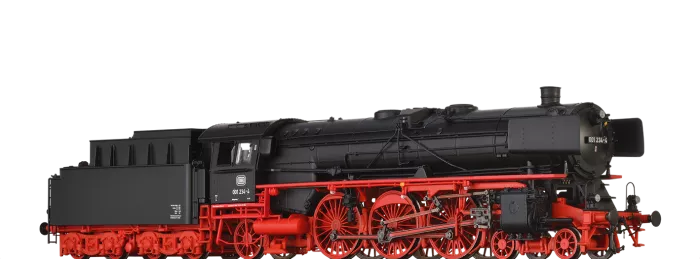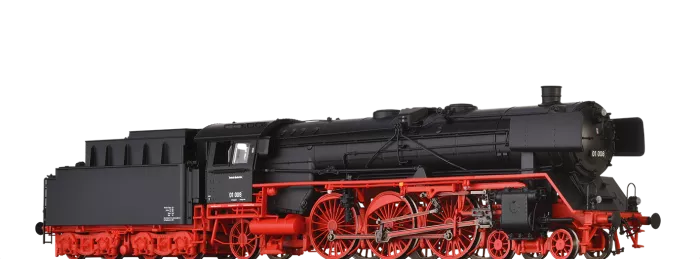
Train Set F 3/4 Merkur DB, set of 5
Road no.: siehe unten / see below
Model details
- Express Train Locomotive BR 01 DB (Road no. 01 115)
- Express Train Coach A4ümg-54 DB (Road no. 11 918 Ffm)
- Express Train Coach A4ümg-54 DB (Road no. 11 855 Stg)
- Express Train Coach A4ümg-54 DB (Road no. 11 904 Stg)
- Dining Car WR4ü-28/51 DSG (Road no. 12 30)
Overview of technical functions
| Light change | |||
| Fire flickering | |||
| Driver cabin lighting | |||
| Engine lighting | |||
| Smoke generator | |||
| Digital interface | PluX22 | PluX22 | PluX22 |
| Decoder | |||
| Sound |
1) function only available in digital mode
2) smoke generator can be retrofitted (FAQ "questions about our products")
Downloads
Info about the original
Reconstruction in Germany was in full swing when the Federal Railway (DB) launched a network of F-trains for official and commercial transport in the summer of 1951. This internationally recognised move by the DB was a clear response to the emerging trend of private motorised transport and the rapidly growing aviation industry. From the outset, the F 3/4 train service, which ran from Frankfurt (M) via Cologne to Hamburg and back, was part of this train network. In 1952, these trains were given the name “Merkur” (Mercury), representing the Roman god of trade, merchants and travellers. Over time, the Merkur trains underwent frequent changes in appearance, and the line was also adapted to suit customer needs. Initially, BR 01-series locomotives were used to pull these trains. In subsequent years, vehicles of the series 03, 03.10, 18.5, 18.6, 39, V200 and E18 took turns as train locomotives. From the summer of 1959 to 1961, the F3 line was redirected from Frankfurt via Wiesbaden central station. The rolling stock had already transitioned to the new 26.4 metre-long 1st class carriages including an old-style dining car of the type WR4ü-28, -35 or -39. During the summer of 1959, the 01 149 locomotive from the Darmstadt railway depot was regularly deployed on this section of the line. No doubt driven by economic considerations, the task of pulling the trains was later given to the BR 01 locomotives from the Wiesbaden railway depot, as visually documented by our 01 115.



